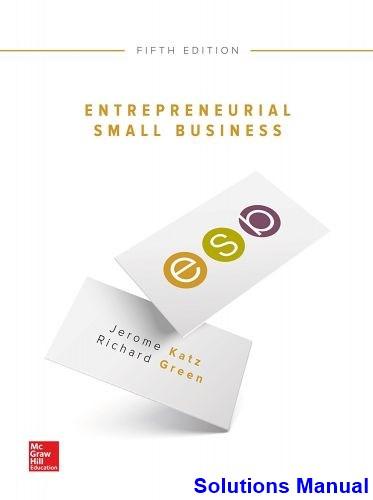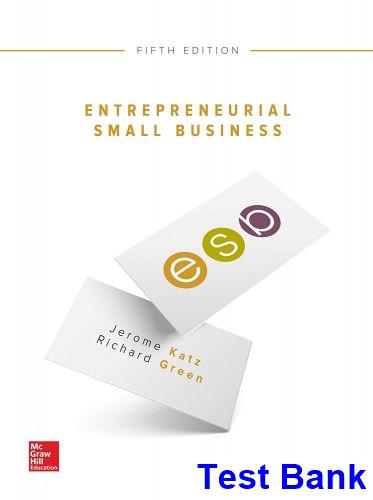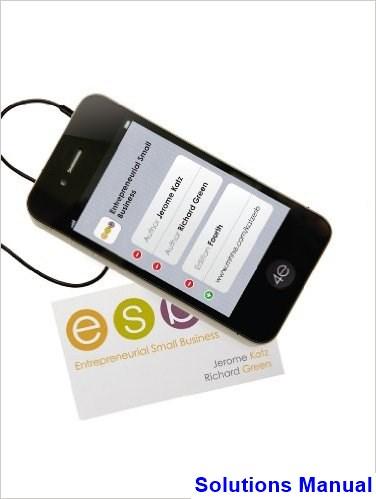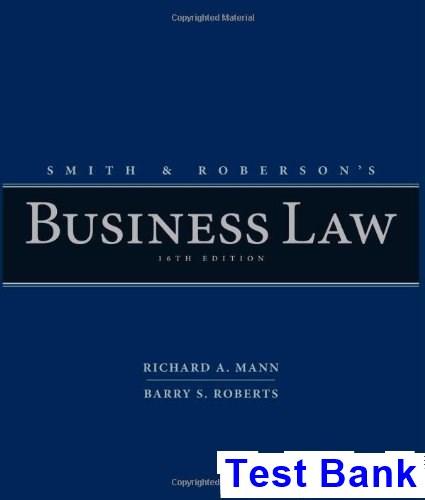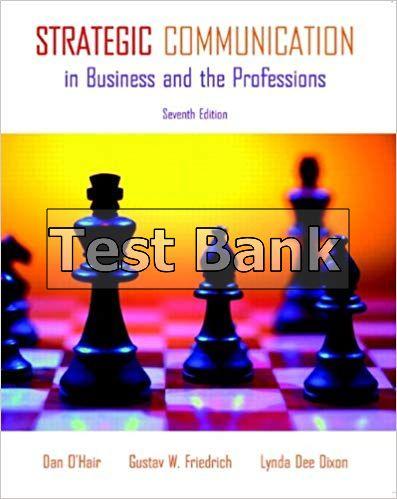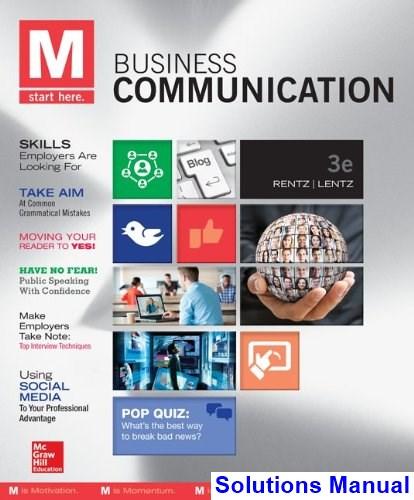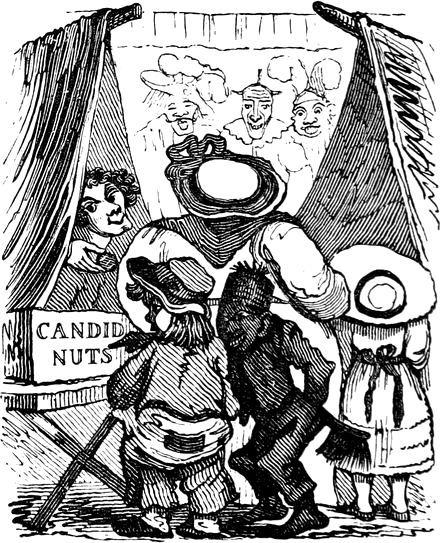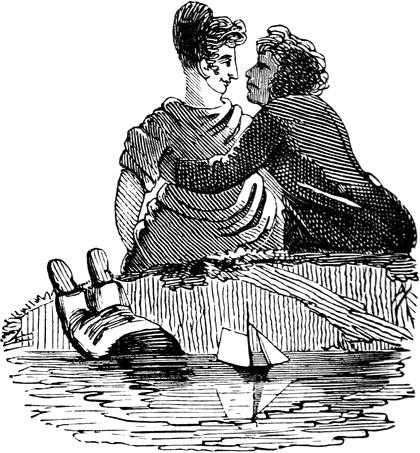CHAPTER 7: SMALL BUSINESS STRATEGIES: IMITATION WITH A TWIST
Chapter Summary
This chapter introduces a number of tools – some of which have been touched on in earlier chapters: industry analysis, SWOT analysis, industry life cycle, and Porter’s generic strategies. The strategic planning process is discussed as are the strategic options a firm faces. The types of benefits that win customers are explored and the concept of competitive advantage is introduced.
Learning Objectives
After studying this chapter, the student should be able to:
1. Describe the decisions needed to establish a foundation for strategic planning.
2. Identify the forms for imitative and innovative businesses.
3. Articulate the benefits that win over customers.
4. Assess how industry changes affect strategies.
5. Explain the major strategies of business – differentiation, cost, and focus.
6. Determine how to sustain competitive advantage through attracting customers and discouraging competition.
Focus on Small Business: Mindnautilus.com
Taking a family idea that had been proposed at the wrong time, Nick Tostenrude and Dennis Moulton formed Mindnautilus, a firm that sold cognitive functioning software via the Internet to people recovering from brain trauma. They have since expanded into related assistive devices and other software for disabled or injured people through their firm Enablemart. The key to their success? Finding the right niche.
Instructor information:
The Mindnautilus case is a great example of the idea of the “corridor principle.” While most folks in entrepreneurship think of it as coming from Bob Ronstadt (Ronstadt, R.C. 1988. The corridor principle. Journal of Business Venturing, 3, no. 1: 31-40), the idea was actually a major tenet of career theorist Samuel Osipow’s open systems model of careers (Theories of career development, 1973). Both authors liken career experience (regular or entrepreneurial) to walking down a corridor full of closed doors. As you walk down the corridor of life as an entrepreneur, you get the chance to open some of the doors. Some of the doors may set you on a new path.
That is what happened to Nick and Dennis. They ended up changing the fundamental strategies of their business – from software to retailing, from conventional sales to the fledgling internet sales, and from a focus on their own products to a focus on the products
© 2014 by McGraw-Hill Education. This is proprietary material solely for authorized instructor use. Not authorized for sale or distribution in any manner. This document may not be copied, scanned, duplicated, forwarded, distributed, or posted on a website, in whole or part.
of others. What was comparatively constant in their approach was their focus on their customer segment (those with handicaps who would benefit from assistive devices), and how to best serve this group.
The case is a great starting point for students who only have an inkling of what kind of business they think might work, and it serves as a cautionary tale to those who are absolutely certain they know exactly what needs to be done. Nick and Dennis’ strength from a strategic analysis standpoint is that they let the information they gathered guide their identification and articulation of a business. Their initial passion for the software sustained their hard work learning about the industry, the market and the needs out there, but when the data began to point to other businesses, they let reason come to the front, helping to identify a business that would work. Armed with this insight, they reignited and refocused their passion on making the retailing business work.
For all these reasons, Mindnautilus is a great starting point for thinking about the power of strategic analysis, and a good transition from the discussion of entrepreneurial paths, which we’ve looked at in the prior 2 chapters, to the discussion of specific entrepreneurial actions.
Discussion Questions
1. What were the strengths Mindnautilus possessed? What were the weaknesses it faced?
Their strengths were that they had an in-depth understanding of the target market – people with cognitive disabilities. The market was large. They also had extensive (for the time) knowledge about creating Internet shopping sites using available software. Combining the large market and the Internet, they had a good fit of sales channel (online) and market (diffuse). They had the some support from Dennis’ father (who created the software), and there were two partners available to work, Nick and Dennis, and they had time to devote to the business.
The weaknesses were a lack of suitable sales channels for the product, a lack of customers with the right equipment for using the therapeutic software, and ramping up the software to meet customer expectations in a more sophisticated market. The team lacked the funds to finish the R&D.
2. What would Mindnautilus do better than its competition?
Mindnautilus focused on being a superior marketing organization. Their website offered a variety of assistive products. They marketed their website to major organizations (like Microsoft and Goodwill) gaining credibility and visibility. Building on this, they would become one of the most effective sales outlets for many of their suppliers, strengthening their relationships with suppliers, and decreasing the chance of suppliers competing with
© 2014 by McGraw-Hill Education. This is proprietary material solely for authorized instructor use. Not authorized for sale or distribution in any manner. This document may not be copied, scanned, duplicated, forwarded, distributed, or posted on a website, in whole or part.
Mindnautilus.
3. What kind of strategy did Nick and Dennis plan for Mindnautilus?
The original plan was to create a software company. The final plan was to create an online store (or catalog). Some folks will take Nick’s comment at face value “Find a niche”. Indeed, Mindnautilus fills a niche for assistive technologies for the disabled. But is the disabled a niche? It absolutely can be seen as one.
However, some folks could make the argument that the disabled are actually a mass market (millions of people scattered all over the country or world), and Mindnautilus followed a differentiation strategy, giving their mass market customers a broader selection, or the convenience of one-stop shopping, or the benefit of the expertise of Mindnautilus. Using this sort of approach, an answer of a mass-market differentiation strategy might be supportable. Not knowing from the case the advertising approach used, a student could reasonably go either way, although the niche market approach is the simpler and more straightforward answer.
4. Do you think Dennis and Nick could have predicted they would start Enablemart when they started Mindnautilus? Why or why not?
It is unlikely that Dennis and Nick could have predicted their becoming a retailer when their intention was to sell software. They might have figured they would have to market their own product, but the idea of become a clearinghouse for other companies’ products might have seemed at first to be a major distraction from their goal of getting their own software into the marketplace.
Extended Chapter Outline
Objective 1: Describe the decisions needed to establish a foundation for strategic planning.
• Strategy is the idea and actions that explain how the firm will make its profit.
o Good strategy leads to greater chances of survival and higher profits
o Since most small businesses are imitative rather than innovative, strategy becomes very important.
• Strategy is a four step process:
o Goals, customer and benefits, industry dynamics and analysis, and strategy selection and implementation.
o Each have specific tool discussed in the book.
o After these four steps there is the continuing post start-up tactics phase.
© 2014 by McGraw-Hill Education. This is proprietary material solely for authorized instructor use. Not authorized for sale or distribution in any manner. This document may not be copied, scanned, duplicated, forwarded, distributed, or posted on a website, in whole or part.
• Strategy is based on four major decisions:
o The major goals you set for the firm.
o The types of customers you seek and what benefits you plan to offer them.
o The stag and trend of your chosen industry.
o The specific generic and supra strategies you choose to pursue.
• The goals segment is the time for five basic decisions:
o What do you expect from the business?
o What is your product or service?
o How innovative or imitative will you be?
o Who do you plan to sell to?
o Where do you plan to sell?
• The first goal question to answer deals with your own expectations
o What rewards (as discussed in Chapter 1) are important to you?
o What is your magic number?
o This reward is the “why” which drives the process of entrepreneurship.
Skills Module 7.1: Finding Your Magic Number
o
Working with the income you’d like to draw from your business, you compute backwards to the total sales figure your firm will need. This number can then be used to calculate what you need to accomplish each day in order to make those sales.
• The product or service is the second goal decision to be made.
o 37% of businesses start with an idea while another 21 % have the idea and the desire to start a business simultaneously.
o The idea gets real as either a product or service.
o A product or service idea implies an industry.
Select an industry that offers good potential for making a profit and with a minimum of risk and competition, a combination known as industry attractiveness.
Use either the NAICS or SIC code to find more information about the industry.
Skill Module 7.2: Finding Your Firm’s Industry
This exercise helps students determine their firm’s NAICS and SIC codes.
If the classroom is smart, work through this exercise in class, but for something other than a restaurant. Use this industry throughout the lecture to illustrate other techniques as well.
© 2014 by McGraw-Hill Education. This is proprietary material solely for authorized instructor use. Not authorized for sale or distribution in any manner. This document may not be copied, scanned, duplicated, forwarded, distributed, or posted on a website, in whole or part.
Teaching tool: Have the students work in groups. Give each group several copies of trade magazines for different industries. If available, have them use the Internet to find NAICS or SIC number, and other trade associations that might be affiliated with the industry. Have them visit the Websites of these associations and other trade magazines. From all this information, they should be able to compose a list of helps for starting a business in this industry.
Objective 2: Identify the forms for imitative and innovative businesses.
• For most small businesses, the owner will want to be a lot alike the rest of the industry – with something that distinguishes them from their competition.
• Businesses have several choices.
o Many do more or less what others do in an imitative strategy.
Advantages include being able to buy existing technology.
Vendors and service suppliers are familiar with what you are doing.
Customers already know about your product or service and you don’t have to educate them.
o An innovative strategy is pursued by those firms doing something very different than what’s been done before.
The advantage here is making your business precisely fit your own ideas and preferences.
The main disadvantage is in the energy needed to market these products.
o Most firms operate somewhere on the continuum of purely innovative to “cloned,” imitative businesses, and varying on degrees of similarity.
If your business if basically the same as the competition with a few minor differences, you are following a parallel competition approach.
Add a few more significant changes in one or two key areas, and you are following an incremental innovation approach.
A brand new product or service is pure innovation, also known as blue ocean strategy.
Parallel innovation makes up of using the standard-setter’s approach for lower start-up costs but without the standard-setter’s mistakes.
Incremental innovation takes it to a new level by picking one area in which to do much better than the pioneer or to borrow something from another industry and use it.
• The second step in the strategy process focuses on the kind of customer to whom you want to sell and the benefits that will attract them.
• A market is a business term for the population of customers for your product or service.
© 2014 by McGraw-Hill Education. This is proprietary material solely for authorized instructor use. Not authorized for sale or distribution in any manner. This document may not be copied, scanned, duplicated, forwarded, distributed, or posted on a website, in whole or part.
o Scale has to do with the size of the market.
A market’s scale may cover large portions of the populations – a mass market.
It may also cover a narrowly defined segment of the populations – a niche market.
Most industries have both mass and niche markets
o Scope looks at the market’s geographic spread.
A market’s scope may be local to global; most small businesses tend to be local in scope.
Scope helps you determine where to focus your sales and advertising efforts.
Scope also helps you identify the more important competitors.
o In the goal step, the key is to bring together the decisions that underlie the business you hope to run.
Objective 3: Articulate the benefits that win over customers.
• Strategy and marketing are closely connected in the planning and everyday operations of a business because they define the who, how and why of the business operation.
o Marketing is the actin of a business related to promoting and selling goods or services.
Marketing focuses on value proposition while strategy focuses on competitive advantage.
The focus here is on the kind of customer to whom you want to sell and the benefits that will attract them.
• There are certain groups of customers considered attractive:
o Corporate customers: B2B sales exceed B2C.
o Loyal customers: the ones who return and are pre-sold.
o Local customers: in the digital age “local” has more to do with the relationship you develop.
o Passionate customers: those who rave about your business.
• Thinking about who your potential customers will be helps you find them.
Skill
o One key decision in finding the customers is to offer them benefits they want.
Module 7.3:
Checking Customer Opinion Online
This exercise leads students through checking for on-line opinions in order to be able to produce and market a new iPhone case acceptable to consumers.
Students are lead through a series of increasingly less direct ways to find opinions and are warned of fraudulent reviews.
© 2014 by McGraw-Hill Education. This is proprietary material solely for authorized instructor use. Not authorized for sale or distribution in any manner. This document may not be copied, scanned, duplicated, forwarded, distributed, or posted on a website, in whole or part.
• Benefits are how you appeal to your target customer base.
o Value benefits include quality, style, delivery, service, technology, shopping ease, personalization, assurance, place, credit, brand reputation, belonging and altruism.
o Cost benefits come from lower costs, scale savings, or scope savings and learning and organizational practices.
• As you decide what benefits to offer you can use perceptual mapping, a powerful strategic analysis tool explored further in the Skills Module below.
Skills Module 7.4: Building Perceptual Maps
The Skills Module leads students through the process of creating a perceptual map of EnableMart.
Objective 4: Assess how industry changes affect strategy
• Industry refers also to your competitors.
o You will want to consider your industry dynamics, that is, the changes in competitors, sales and profits.
o Industries move in traditional ways:
During introduction stage there are only a few firms.
• They are innovative.
• The number of firms and their sales grow slowly.
Once customers are more aware there are two growth stage possibilities:
• Most firms grow at a regular rate where the growth in new firms more or less meets customer demand.
• Alternatively, there are some ‘hot” products or services with grow extremely rapidly.
o Other firms jump into the market to take advantage of this growth or boom.
o As the boom ends, there is a shake-out where many of the firms close down.
Once the industry reached a fairly stable number of firms, the industry has reached the maturity stage
Eventually mature industries start to decline.
Decline results in death for some industries while other go through retrenchment.
o Industry dynamics inform you about the prospects of your industry as a whole and can be evaluated through an industry analysis. Industry analysis can be a good way for you to look at cutting costs or leveraging other resources in order to meet you magic number.
o Knowing the stage or trend of the industry will help you make certain business decisions.
If the industry is established, you will be able to find location, equipment and experienced workers.
© 2014 by McGraw-Hill Education. This is proprietary material solely for authorized instructor use. Not authorized for sale or distribution in any manner. This document may not be copied, scanned, duplicated, forwarded, distributed, or posted on a website, in whole or part.
If the industry is in earlier stages, you may need to spend more time and money as those resources will not be readily available.
If the analysis shows a large number of competitors, you will carefully analyze their positions to see if you can find the right niche in order to be successful
• A table with current sources of data of IA is provided.
•
Skill Module 7.5: Short and Sweet Industry Analysis:
This exercise helps the student conduct the five steps of an Industry Analysis:
1. SIC/NACIS number
2. Industry size over time
3. Profitability, including gross profit, net profit, and profit before taxes.
4. How profits are made
5. Target market competitor concentration
6. Analysis
7. Sources
While doing an IA is an important step in exploring possible industries, the fact that some of this information is “for pay” only can be discouraging. Many universities allow graduates (and sometimes the general public) permanent access to library resources. Other times, a SCORE office may be affiliated with a university and may be able to help get the information you need.
Objective 5: Explain the major strategies of business – differentiation, cost, and focus.
• The three classic strategies possible are so widely applicable that they are called generic strategies.
o Showing how your products or services are different than your competition’s products or services is known as differentiation strategy. This strategy is aimed at a mass market.
o Cost strategy, also aimed at mass markets, shows how your product or service offers cost benefits the competition does not.
o Concentrating efforts on a segment of the mass market is known as focus strategy.
A focus strategy generally uses aspects of cost or differentiation as well.
A small firm (especially service firms) often focuses on a specific geographic area and competes within this area on cost or differentiation.
• As an extension, there are a number of small business supra-strategies that can be pursued:
o Craftsmanship
© 2014 by McGraw-Hill Education. This is proprietary material solely for authorized instructor use. Not authorized for sale or distribution in any manner. This document may not be copied, scanned, duplicated, forwarded, distributed, or posted on a website, in whole or part.
o Customization
o Super Support
o Serving the Underserved/Interstices
o Elite
o Single-mindedness
o Comprehensiveness
o Formula facilities (e.g., franchising)
o Bare bones or no-frills provider
o Cutting out the intermediary
o Tightly managed decentralization.
Teaching tool: List a number of businesses with which your students are familiar. For the purposes of this exercise, you may use both small and large businesses. Have students decide which generic strategy then think they follow as well as suprastrategies strategies as appropriate.
• Knowing your intended level of imitation tells you a lot about your business as shown in Table 7.2.
• Occasionally, however, opportunities pop up and you may need to consider a quick pivot.
o These opportunities are called entry wedges:
Supply shortages.
Unutilized resources
Customer contracting.
Second sourcing.
Market relinquishment.
Favored purchasing.
Government rules.
Small Business Insights: Initiative for a Competitive Inner City
Sundra Ryce founded SLR Construction Service Company in Buffalo, New York’s inner city, using the “unutilized resources” entry wedge.
Have students identify other companies that have made use of this entry wedge.
• At this point:
o The industry analysis shows you if you are in the right industry and where your competitors are and the current industry stage.
o Your earlier decision about imitative or innovative strategy has been made.
o Now it’s time to decide how to set up your firm in order to implement these strategies.
© 2014 by McGraw-Hill Education. This is proprietary material solely for authorized instructor use. Not authorized for sale or distribution in any manner. This document may not be copied, scanned, duplicated, forwarded, distributed, or posted on a website, in whole or part.
Objective 6: Determine how to sustain competitive advantage through attracting customers and discouraging competition.
• The goal of strategy after the start-up stage is to maximize profits or other rewards and protecting your business from competition.
o This is the step of securing competitive advantage. Competitive advantage is the particular way your firm stays ahead of other firms in the industry based on the way you implement the customer benefits you have selected
o It’s harder than it looks to determine this because there are a number of threats a firm faces. These are captured in Porter’s five force model:
Suppliers
Buyers
New Entrants
Substitutions
Competition
• The major ways you cope with competitive pressures is by undertaking a combination of strategic actions and tactical actions.
o Exhibit 7.3 lists strategic and tactical competitive actions.
• Strategy is the way an entrepreneur plots the path to success. Every business has a strategy and successful businesses have strategies that fit their industry, market and resources
Key Terms
Blue ocean strategy: a strategy based on creating a new product or service which has no competition.
Boom: a stage of extremely rapid growth.
Competitive advantage: the particular way a firm implements customer benefits that keeps the firm ahead of other firms in the industry or market.
Competitors: any other businesses in the same industry as yours
Cost strategy: a generic strategy aimed at mass markets in which a firm offers a combination of cost benefits that appeal to the customer.
Decline: a life cycle stage in which when sales and profits of the industry begin a falling trend.
Degree of similarity: the extent to which a product or service is like another.
Differentiation strategy: a type of generic strategy that is aimed at clarifying how one product is unlike another in a mass market.
© 2014 by McGraw-Hill Education. This is proprietary material solely for authorized instructor use. Not authorized for sale or distribution in any manner. This document may not be copied, scanned, duplicated, forwarded, distributed, or posted on a website, in whole or part.
Entry wedge: is an opportunity that makes it possible for a new business to gain a foothold in a market.
Focus strategy: a generic strategy that targets a portion of the market – called a segment or niche.
Generic strategies: three widely applicable classic strategies for businesses of all types –differentiation, cost, and focus.
Goal: an intended outcome for your business.
Growth stage: and industry life cycle stage in which customer purchases increase at a dramatic pace.
Gross profit: funds left over after accounting for the cost of goods sold.
Imitative strategy: an overall strategic approach in which the entrepreneur does more or less what others are already doing.
Incremental innovation: an overall strategic approach in which a firm patterns itself on other firms, with the exception of one or two key areas.
Industry: the general name for the line of product or service being sold, or the firms in that line of business.
Industry Analysis (IA): a research process that provides the entrepreneur with key information about the industry, its current situation and trends.
Industry dynamics: changes in competitors, sales and profits in an industry.
Innovation strategy: an overall strategic approach in which the firm seeks to do something that is very different from others in the industry.
Introduction stage: the life cycle stage in which the product or service is being invented and initially develops.
Magic number: the post-tax income the entrepreneur personably seeks from the business.
Market: the business term for the population of customers for your product or service.
Marketing: actions of a business related to promoting and selling products or services.
Mass market: a customer group that involves large portions of the population.
© 2014 by McGraw-Hill Education. This is proprietary material solely for authorized instructor use. Not authorized for sale or distribution in any manner. This document may not be copied, scanned, duplicated, forwarded, distributed, or posted on a website, in whole or part.
Maturity stage: the third life cycle stage marked by a stabilization of demand, with firms in the industry moving to stabilize or improve profits through cost strategies.
Net profit: what is left after operating expenses for the business.
Niche market: a narrowly defined segment of the population that is likely to share interests or concerns.
Parallel competition: an imitative business competing locally with others in the same industry.
Perceptual map: a graphic display which positions produce, services, brands or companies according to their score on important strategic dimensions.
Profit before taxes: what the owner or owners take out of the firm annually.
Pure innovation: the process of creating new products or services, which results in a previously unseen product or service.
Retrenchment: an organizational life cycle stage for established firms that involves finding new approaches pursued to improve the business and its chances for survival.
Scale: a characteristic of a market, which describes is the size of the market; a mass market or a niche market.
Scope: a characteristic of a market, which tells the geographic range covered by the market – from local to global.
Shake-out: after a boom when only the strongest firms remain viable.
Strategic actions: competitive responses requiring a major commitment of resources.
Supply chain: a way to think about the line of distribution of a product from its start a material s outside the target firm, to its handling in the target firm, to its handling by seller, with placement into the hands of the customers.
Tactical actions: responses with low resources requirements.
Value proposition: small business owners’ unique selling points (or benefits) that customers can expect from your goods or services including benefits that differentiate your offering from those of competition
Discussion Questions:
NOTE: many questions allow for a number of different answers. Below are some suggestions.
© 2014 by McGraw-Hill Education. This is proprietary material solely for authorized instructor use. Not authorized for sale or distribution in any manner. This document may not be copied, scanned, duplicated, forwarded, distributed, or posted on a website, in whole or part.
1. The book asserts “All strategy stars with the owner.” Many of the gurus of strategy say strategy starts with the environment outside the firm. Which do you think is true? Be ready to back it up.
Answers will vary. There is some truth in both statements. A potential entrepreneur starts with an idea and develops a strategy to take it to fruition; this is support for the first. What in happening in the environment, separate and most likely preceding the entrepreneur’s decisions has a tremendous effect on what the entrepreneur should do or even if his idea is feasible; in other words, the entrepreneur’s strategy is molded by the environment.
2. A lot of famous entrepreneurs brag how innovative their product is, when it is fundamentally like the competition, although better in one way or another. How do you classify such entrepreneurs in terms of the innovation/imitation balance?
While there is room for discussion, most would agree that they are really purely imitative or incrementally imitative.
3. Imagine you have developed a new two-way GPS system for trucks and their dispatchers. Trucking companies are all over the country. So are you looking at a mass market? Why or why not?
NOTE: This question advances some ideas about target markets further developed in the marketing chapters to follow.
No, in a true mass market, anyone is a potential customer. In this niche market, only a small sub-segment of the B2B market (trucking companies) are the market. (Yes, there may be spillover sales into other B2B or B2C markets, but this is not likely where the firm would put its efforts.)
4. What are the differences between innovative and imitative strategies? Which is more likely to be something a small business can pursue?
Businesses pursuing imitative strategies do more or less what other businesses in that industry are doing. Businesses pursuing an innovative strategy are trying to do something substantially different from what has been done to date in that industry (or even – in extreme cases - start a new industry). They differ in the level of prior knowledge about the product, service or market (imitative reflects higher prior knowledge). They differ in the level of risk perceived –with innovation seen as riskier. They differ in the assurance people perceive in cost and profit projections – again with innovation seen as riskier.
Small businesses are more likely to pursue (and be able to pursue) an imitative
© 2014 by McGraw-Hill Education. This is proprietary material solely for authorized instructor use. Not authorized for sale or distribution in any manner. This document may not be copied, scanned, duplicated, forwarded, distributed, or posted on a website, in whole or part.
strategy. It is more likely because more people do elect imitative approaches (as the PSED shows), and the existence of franchising as a major approach to start-ups reflects an extreme version of imitation. Following an imitative strategy also helps a small business leverage existing technologies, markets and knowledge about your product or service among customers and other stakeholders. This approach increases the initial legitimacy of a small business.
Some small business founders elect an innovative strategy. It allows them to do things their own way, and can possibly position them where competition is less. It is riskier insofar as customers, investors or suppliers may be uncertain about the innovation or its likelihood of success, and this makes legitimating the business more problematic.
5. Pick a small business with which all the class is familiar. Discuss what are the customer benefits that the business is trying to offer. Could they do a better job if they chose some other benefit?
Answers will vary.
6. Small businesses that pursue cost (or focus) strategy often do so by using a location in a very low-rent district, with the store itself made up of used furniture, no decoration, and a very no-frills atmosphere. What is the problem with such an approach? Can you think of other ways to achieve low-cost without encountering similar problems?
The low-rent, no-frills approach forgoes almost any possible value benefit the consumer might get from purchasing the product or service.
Answers will vary as to solutions but some things that could be considered include starting with an Internet only approach, use consignment, start at home or forgo some size in order to afford a better location or fixtures.
7. What is the competitive advantage of a business, and how does it lead to success?
Competitive advantage is the particular way you implement your customer benefits that keeps your firm ahead of other firms in your industry or market. Competitive advantage is your firm’s “edge” in meeting and beating the competition.
Competitive advantage works by helping customers distinguish your firm from others in the industry or locality. When your advantage matches the customer’s desires, loyalty is built and sales are strengthened. Having a competitive advantage that is difficult for others to copy can help you sustain
© 2014 by McGraw-Hill Education. This is proprietary material solely for authorized instructor use. Not authorized for sale or distribution in any manner. This document may not be copied, scanned, duplicated, forwarded, distributed, or posted on a website, in whole or part.
the sales and loyalty advantages. It offers protection from competition.
8. In the life cycle of a young firm, how can you tell when it has left the introductory stage and entered the growth stage?
a. In the growth stage, customers begin to notice the product or service and buy significantly more of it (vs. a need for the seller to educate the potential customer about the product in the introductory stage).
b. In the Growth Stage there is a burst of new companies providing the product or service, and high variation in the offerings (vs. few companies and some variation in offerings for introductory stage).
c. In the Growth Stage, sales boom, suggesting the beginnings of a mass market (vs. niche for introductory stage).
d. In the Growth Stage, the major customer segment is the Early Majority (vs. Early Adopter for introductory stage).
Experiential Exercises
1. Get the industry statistic you need form the government. Go to Census Industry Snapshot page (www.census.gov/econ/snapshots) and look up “lawn and garden equipment and supplies stores” (NAICS 4442 ). Our goal is to get information on stores in Vermont, so check Vermont on “Change Geography: option to see the statewide numbers. How many stores were the statewide last count?
At press time the answer was 85 for 2012.
2. Look at hamburger restaurants. How do they pursue imitative status and when do they offer innovation.
Answers will vary.
3. Pick five online businesses in the same industry. From their websites, see if you can identify what they think is their competitive advantage. Do you agree with their assessment? Why or why not?
You can go about this having students (or student teams) work up their comparisons. Make sure they write down their comparison points (and their basis for making the point – otherwise they get lost or forgotten). You can also specify an industry and sites and let students report on their findings – a “see what you can add” approach works well to get new ideas up on the board.
To stick with the hamburger example McDonalds keeps trying all sorts of ways to change what folks see as its competitive advantages (ready availability, absolute consistency, low price, relatively low price, relatively fast drive-through, little kids’ acceptance), to something more upscale and
© 2014 by McGraw-Hill Education. This is proprietary material solely for authorized instructor use. Not authorized for sale or distribution in any manner. This document may not be copied, scanned, duplicated, forwarded, distributed, or posted on a website, in whole or part.
A TRUE STORY.
WHOE’ER has seen upon the human face The yellow jaundice and the jaundice black, May form a notion of old Colonel Case With nigger Pompey waiting at his back.
Case,—as the case is, many time with folks From hot Bengal, Calcutta, or Bombay, Had tint his tint, as Scottish tongues would say, And show’d two cheeks as yellow as eggs’ yolks. Pompey, the chip of some old ebon block, In hue was like his master’s stiff cravat, And might indeed have claimed akin to that, Coming, as hedid, of an old blackstock.
Case wore the liver’s livery that such Must wear, their past excesses to denote, Like Greenwich pensioners that take too much, And then do penance in a yellow coat.
Pompey’s, a deep and permanent jet dye, A stain of nature’s staining—one of those, We call fastcolours—merely, I suppose, Because such colours never goor fly.
Pray mark this difference of dark and sallow, Pompey’s black husk, and the old Colonel’s yellow.
The Colonel, once a penniless beginner, From a long Indian rubber rose a winner, With plenty of pagodas in his pocket, And homeward turning his Hibernian thought, Deem’d Wicklowwas the very place that ought To harbour one whose wickwas in the socket.
CAPTAIN ROCK.
Unhappily for Case’s scheme of quiet, Wicklow just then was in a pretty riot, A fact recorded in each day’s diurnals, Things, Case was not accustomed to peruse, Careless of news; But Pompey always read these bloody journals, Full of Kilmany and Killmore work, The freaks of some O’Shaunessy’s shillaly, Of morning frays by some O’Brien Burke, Or horrid nightly outrage by some Daly; How scums deserving of the Devil’s ladle, Would fall upon the harmless scull and knock it, And if he found an infant in the cradle Stern Rock would hardly hesitate to rock it;— In fact, he read of burner and of killer, And Irish ravages, day after day, Till, haunting in his dreams, he used to say, That “Pompey could not sleep on Pompey’sPillar.”
Judge then the horror of the nigger’s face
To find—with such impressions of that dire land— That Case,—his master, was a packing case For Ireland!
He saw in fearful reveries arise, Phantasmagorias of those dreadful men Whose fame associate with Irish plots is, Fitzgeralds—Tones—O’Connors—Hare—and then “Those Emmetts,” not so “little in his eyes”
As Doctor Watts’s!
He felt himself piked, roasted—carv’d and hack’d, His big black burly body seemed in fact A pincushion for Terror’s pins and needles,— Oh, how he wish’d himself beneath the sun Of Afric—or in far Barbadoes—one Of Bishop Coleridge’s new blackbeadles.
Full of this fright,
With broken peace and broken English choking, As black as any raven and as croaking, Pompey rushed in upon his master’s sight, Plump’d on his knees, and clasp’d his sable digits, Thus stirring Curiosity’s sharp fidgets—
“O Massa!—Massa!—Colonel!—Massa Case,—
Not go to Ireland!—Ireland dam bad place; Dem take our bloods—dem Irish—every drop— Oh why for Massa go so far a distance To have him life?”——Here Pompey made a stop, Putting an awful period to existence.
“Not go to Ireland—not to Ireland, fellow, And murder’d—why should I be murder’d, Sirrah?”
Cried Case, with anger’s tinge upon his yellow,— Pompey, for answer, pointing in a mirror
The Colonel’s saffron, and his own japan,— “Well, what has that to do—quick—speak outright, boy?”
“O Massa”—(so the explanation ran)
“Massa be killed—’cause Massa OrangeMan, And Pompey killed—’cause Pompey not a WhiteBoy!”
POMPEY’S PILLAR.
“O, NOTHING IN LIFE CAN SADDEN US.”
THE SORROWS OF AN UNDERTAKER.
TO mention only by name the sorrows of an Undertaker, will be likely to raise a smile on most faces,—the mere words suggest a solemn stalking parody of grief to the satiric fancy;—but give a fair hearing to my woes, and even the veriest mocker may learn to pity an Undertaker who has been unfortunate in all his undertakings.
My Father, a Furnisher and Performer in the funeral line, used to say of me,—noticing some boyish levities—that “I should never do for an Undertaker.” But the prediction was wrong—my Parent died, and I did for him in the way of business. Having no other alternative,
I took possession of a very fair stock and business. I felt at first as if plunged in the Black Sea—and when I read my name upon the shop door, it threw a crape over my spirits, that I did not get rid of for some months.
Then came the cares of business. The scandalous insinuated that the funerals were not so decorously performed as in the time of the Late. I discharged my mutes, who were grown fat and jocular, and sought about for the lean and lank visaged kind. But these demure rogues cheated and robbed me—plucked my feathers and pruned my scarfs, and I was driven back again to my “merrie men,”—whose only fault was making a pleasure of their business.
FAIRY LAND.
Soon after this, I made myself prominent in the parish, and obtained a contract for Parochial Conchology—or shells for the paupers. But this even, as I may say, broke down on its first tressels. Having as my first job to inter a workhouse female—Ætat. 96—and wishing to gain the good opinion of the parish, I had made the arrangements with more than usual decency. The company were at the door. Placing myself at the head, with my best burial face, and my slowest solemnity of step, I set forward, and thanks to my professional deafness,—induced by the constant hammering—I never perceived, till at the church gates, that the procession had not
stirred from the door of the house. So good a joke was not lost upon my two Mutes, who made it an excuse for chuckling on after occasions. But to me the consequence was serious. A notion arose amongst the poor that I was too proud to walk along with their remains, and the ferment ran so high, that I was finally compelled to give up my contract.
So much for foot funerals. Now for coach work. The extravagant charges of the jobbers at last induced me to set up a Hearse and Mourning Coaches of my own, with sleek ebony long-tailed horses to match. One of these—the finest of the set—had been sold to me under warranty of being sound and free from vice; and so he was, but the dealer never told me that he had been a charger at Astley’s. Accordingly on his very first performance, in passing through Bow,— at that time a kind of Fairy Land,—he thought proper, on hearing a showman’s trumpet, to dance a cotillion in his feathers! There was nothing to be done but to travel on with three to the next stage, where I sold the caperer at a heavy loss, and to the infinite regret of my merry mourners, with whom this exhibition had made him a great favourite. From this period my business rapidly declined, till instead of five or six demises, on an average, I put in only two defuncts and a half per week.
In this extremity a “black job” was brought to me that promised to make amends for the rest. One fine morning a brace of executors walked into the shop, and handing to me the following extract of a will, politely requested that I would perform accordingly and with the pleasing addition that I was to be regardless of the expense. The document ran thus: “Item, I will and desire that after death, my body be placed in a strong leaden coffin, the same to be afterwards enclosed in one of oak, and therein my remains to be conveyed handsomely to the village of *** in Norfolk, my birth-place; there to lie, being duly watched, during one night, in the Family mansion now unoccupied, and on the morrow to be carried thence to the church, the coffin being borne by the six oldest resident and decayed parishioners, male or female, and for the same they shall receive
severally the sum of five pounds, to be paid on or before the day of interment.”
It will be believed that I lost no time in preparing the last solid and costly receptacles for the late Lady Lambert; and the unusual bulk of the deceased seemed in prospective to justify a bill of proportionate magnitude. I was prodigal of plumes and scutcheons, of staves and scarfs, and mourning coaches; and finally, raising a whole company of black cavalry, we set out by stages, short and sweet, for our destination. I had been prudent enough to send a letter before me to prepare the bearers, and imprudent enough to remit their fees in advance. But I had no misgivings. My men enjoyed the excursion, and so did I. We ate well, drank well, slept well, and expected to be well paid for what was so well done. At the last stage it happened I had rather an intricate reckoning to arrange, by which means being detained a full hour behind the cavalcade, I did not reach the desired village till the whole party had established themselves at the Dying Dolphin; a fact I first ascertained from hearing the merriment of my two mutes in the parlour. Highly indignant at this breach of decorum, I rushed in on the offending couple; and let the Undertaking Reader conceive my feelings, when the following letter was put into my hands, explaining at once the good joke of the two fellows, or rather, that of the whole village.
“Sir,—We have sought out the six oldest of the pauper parishioners of this place, namely as follows:—
Margaret Squires, aged 101, blind and bed-rid.
Timothy Topping, aged 98, paralytic and bed-rid.
Darius Watts, aged 95, with loss of both legs.
Barbara Copp, 94 years, born without arms.
Philip Gill, about 81, an Idiot.
Mary Ridges, 79, afflicted with St. Vitus.
“Among whom we have distributed your Thirty Pounds according to desire, and for which they are very grateful.
JOHN GILLS, SAM. RACKSTROW, } Overseers.”
Such were the six bearers who were to carry Lady Lambert to the church, and who could as soon have carried the church to Lady Lambert. To crown all, I rashly listened to the advice of my thoughtless mutes, and in an evil hour deposited the body without troubling any parishioner, old or young, on the subject. The consequence is, the Executors demur to my bill, because I have not acted up to the letter of my instructions. I have had to stand treat for a large party on the road, to sustain all the charges of the black cavalry, and am besides minus thirty pounds in charity, without even the merit of a charitable intention!
